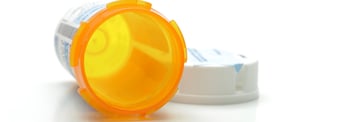Americans In Pain and Addicted: Untangling the Opioid Crisis
- Home
- Blog

Part One: What Went Wrong?
Sally and I went to high school together and remained close friends for many years… so close that we could always talk with one another about anything in our lives, which helped us survive high school and college. She was a lovely woman with a warm personality, who married and gave birth to three children. Unfortunately, Sally was in a loveless marriage and became depressed, and began to suffer from frequent migraines. In addition, she was involved in a motor vehicle accident and developed back pain. Her doctors began prescribing Oxycontin for her back pain and headaches (which also temporarily eased her emotional pain), and she became addicted. Not infrequently, she would call 911 in the middle of the night and be taken to her local emergency room, citing a severe migraine headache and back pain, and the ER staff would send her home with additional opioid prescriptions. Ultimately, she had three different doctors and two ERs prescribing opioids for her. She even tried to get me to prescribe them for her, and when I refused, she became furious and cut off all communication with me. It broke my heart.
How does the average person go from having chronic pain problems, to receiving a prescription for opioid painkillers, to becoming a heroin addict? Unfortunately, if you or a loved one have become dependent on opioids, there is a high risk that you will eventually try heroin as a substitute.[i] In the last five or ten years, addiction to painkillers followed by graduation to heroin use has been dramatically rising across all sectors of America. Public Health officials have declared it an epidemic.[ii] The new face of heroin use is no longer the stereotypical junkie. It is affecting middle and upper class individuals, as well as increasing numbers of women. In fact, 45 percent of people who use heroin were first addicted to prescription opioid painkillers.[iii] And the statistics for Americans addicted to prescription painkillers? An estimated 2.1 million![iv] Let’s take a closer look at this deadly path to heroin use, and what are some of the alternatives to opioid painkillers that may prevent addiction to them in the first place.
Opioid Painkillers, Addiction and Heroin Use
How did so many Americans become addicted to painkillers? Historically, opioid painkillers were only prescribed for the most severe pain, such as after major surgery or for cancer patients; and even then, for only short periods of time. However, since about 2001, more doctors began prescribing opioid painkillers for less severe pain conditions such as arthritis, fibromyalgia, and other chronic conditions. This meant more and more people were using these painkillers for longer periods of time. Prolonged duration of use increases the chances that one will become dependent and addicted.
Even without prolonged use, Opioid painkillers can be highly addictive. Not only do they block pain signals from travelling to the brain—they generally make one feel great all over. When these drugs wear off, the user begins to experience uncomfortable withdrawal symptoms and naturally reach for what made them feel so good. The likelihood of addiction is so great that it has created a national public health crisis. But how does that lead to heroin addiction?
Both opioid painkillers and heroin activate the same receptors on the surface of our brain cells because they come from the same origins—poppy seeds and the opium within them. They both bring relief from pain and provide relaxing, euphoric highs. But as one becomes dependent on the painkillers, more and more of them are needed to reach the same level of pain relief and good feelings. The prescribing doctor may become concerned when the patient taking opioids requests ever-increasing numbers of pills to make it through the month. A prescription that once lasted 30 days now only lasts a week. Then some patients begin turning toward multiple doctors for prescriptions (each doctor unaware of the other prescribers). Many developing addicts desperately turn to dealers to buy painkillers, or try to “borrow” them from friends. However, when purchased illegally, the pill form of opioids is very expensive—costing anywhere from $60 to $100 apiece. In contrast, heroin’s street value is only a fraction of that cost —around $10 to $20 a dose. To further complicate the picture, as most doctors are aware of the opioid addiction epidemic, they are more cautious about prescribing these controlled substances, making them harder to obtain legally. As a result, the demand for heroin has become so high that it is now readily available in many cities as well as their surrounding suburbs.
Opioid Painkillers and Heroin Can be Deadly
Unfortunately heroin, like other types of opioid painkillers, also requires higher and higher doses over time to achieve the same relief from pain. This pattern of dose escalation can lead to overdose—and even death. When the increasingly opioid-dependent individual self-administers too many painkiller pills or uses too much heroin at any given time, major life support functions such as respiration and heartbeats begin to slow down and eventually just stop, resulting in death. Let’s look at the statistics according to the Centers for Disease Control and Prevention (CDC).
- “In 2012, 259 million prescriptions were written for opioids, enough for every American adult to have their own bottle of pills.”[v]
- In 2015, close to 22,600 people in the United States died from taking opioid medications.[vi]
- In 2013, nearly 8,200 heroin-related deaths occurred—up four-fold from 2002.[vii]
If you or someone you care about have chronic pain and are concerned about avoiding addiction to painkillers, there are safer, non-addictive alternatives.
Substitutes for Opioid Painkillers
While there may be a very real need for opioid painkillers in cases of extreme pain, there are many alternatives for mild, moderate, and even chronic pain. These include:
- Yoga & Tai Chi: Yes, exercise! All doctors recommend exercise to improve health, but it is even more important to keep moving and stretching when you have chronic aches and pains. Many studies have shown that chronic back pain, joint pain, arthritis, and fibromyalgia can all be improved with yoga and tai chi.[viii] It just takes more effort than simply popping a pill.
- Antidepressants: SNRI’s (serotonin and norephinephrine reuptake inhibitors), for example Cymbalta and Savella, have been used to treat nerve, muscular, and skeletal pain.[ix]
- NSAIDs: Nonsteroidal anti-inflammatory drugs (NSAIDs) such as ibuprofen and aspirin are much less potent painkillers than opioids but can still be used to alleviate mild lower back pain and osteoarthritis.
- Anticonvulsants: These can be used for various types of nerve pain.[x] Examples include Gabapentin and Lyrica.
- Evidence-Based Chiropractic Therapies: Natural therapies[xi] such as cryotherapy, electrical stimulation, massage, dry needling, and cupping may be an effective alternative to pills.
While there is still an important role for opioid painkillers for acute severe pain, the risks of addiction when used for mild or chronic pain are just too high. Scientists are actively seeking more powerful non-addictive painkillers. But until that day arrives, ask your doctor about the numerous alternatives to opioids.
…Oh, and by the way, you may be wondering, “Whatever happened to Sally?” She became suicidal, entered a rehab facility, was placed on an SNRI antidepressant, weaned off the opioids, and began outpatient physical therapy and psychotherapy. Ultimately, she left her husband and is now happily remarried. And we are devoted friends once again!
The National Drug Hotline, accessible at (844) 289-0879, operates every day. It's open for both personal and family assistance. Seeking help, whether for yourself or someone you care about, can have a significant impact.
.png?width=144&height=144&name=Untitled%20design%20(34).png)



